As a nuisance wildlife control company in North Georgia, Southern Wildlife Management has dealt with numerous cases involving snakes. We find ourselves providing snake removal & snake control services multiple times a day during the snake season. We have found that the most common snakes found from Johns Creek to Dawsonville, Georgia are the copperhead, banded and brown watersnake, brown dekay, black rat snake, king snake, and black racer.
If you feel uneasy when you come across a snake, remember that you have two options: leave it alone or hire a professional to remove it. It’s important to understand that snakes play a vital role in the ecosystem. When you call us for assistance, we take a holistic approach to address the situation. We consider what may be attracting snakes to your yard, such as an overabundance of mice, rats, or squirrels, or the presence of bird feeders. Birds can attract rodents, and rodents can attract predators like snakes, foxes, and coyotes. If you find a snake shed in your basement or attic, it’s likely that there is a food source drawing them inside. We can help you balance the wildlife population and control nuisance wildlife, so don’t hesitate to reach out to us for assistance. Remember, snakes are a natural part of our environment, and with our help, we can ensure that you can greatly reduce your interactions with them.
Copperhead
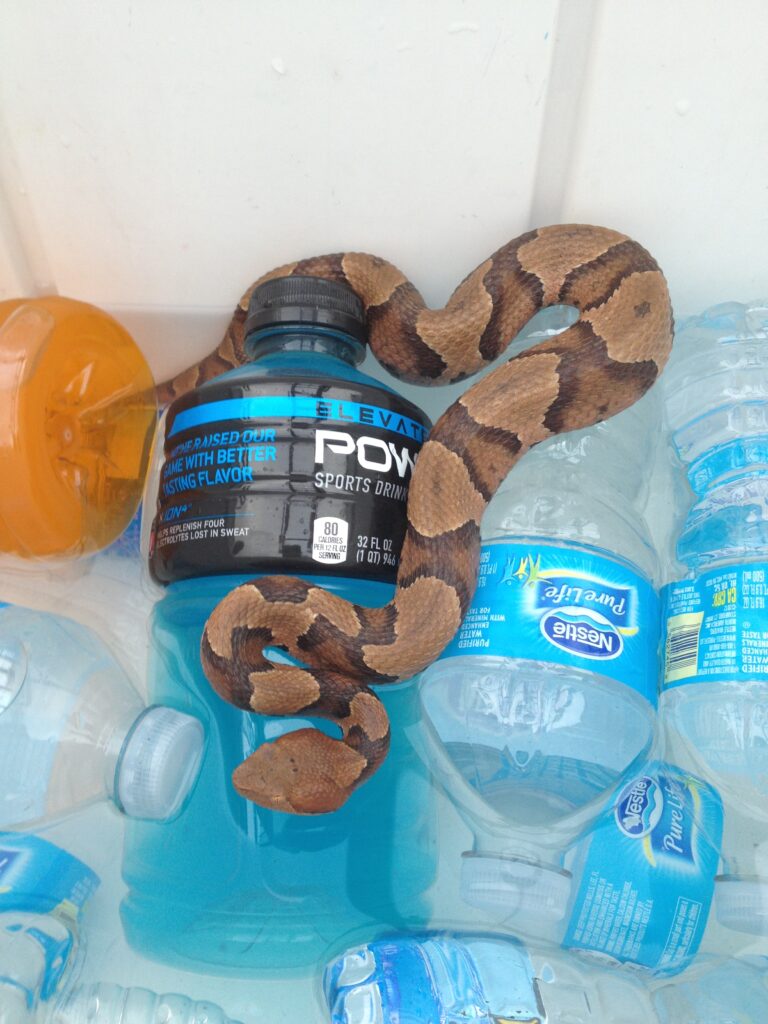
The copperhead snake is one of the most venomous snakes found in North Georgia. It is identified by its copper-colored head and hourglass-shaped markings on its body. They prefer to live in wooded areas and can be found near rocky terrain or in piles of leaves. Copperheads are known to be aggressive “when provoked”, so it is best to leave them alone.
Banded and Brown Watersnake
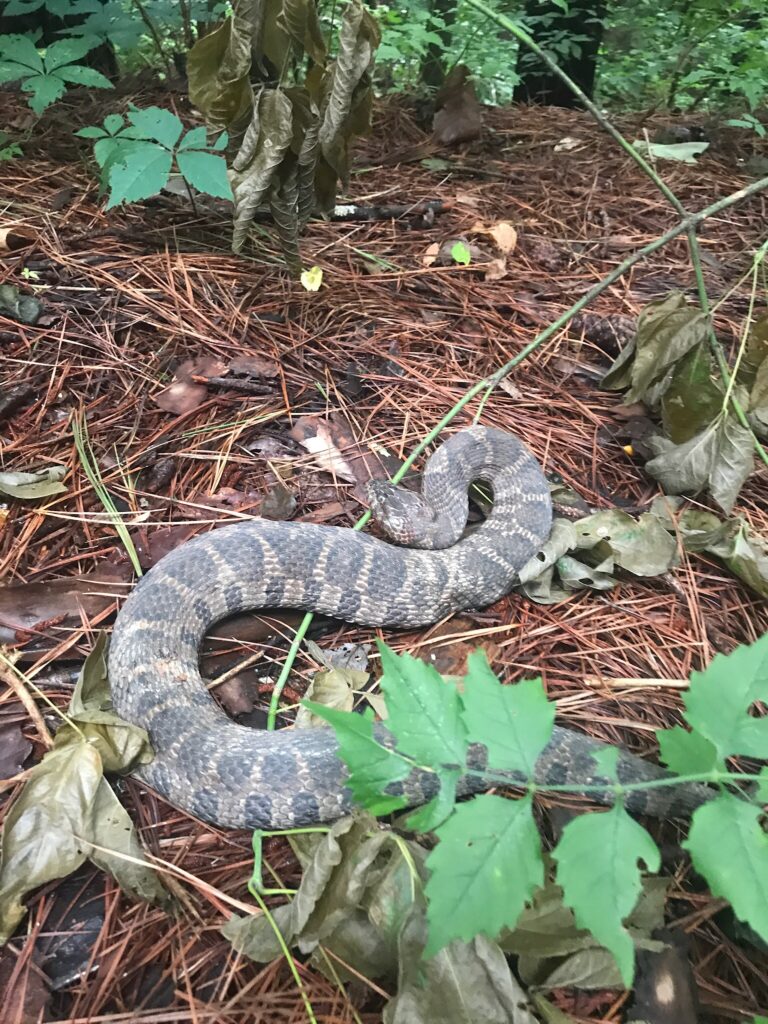
The banded and brown watersnake is a non-venomous snake that can be found near water sources such as lakes, ponds, and streams. They are identified by their brown or tan body with dark bands across their back. These snakes are great swimmers and can be found basking in the sun near the water’s edge.
Brown Dekay
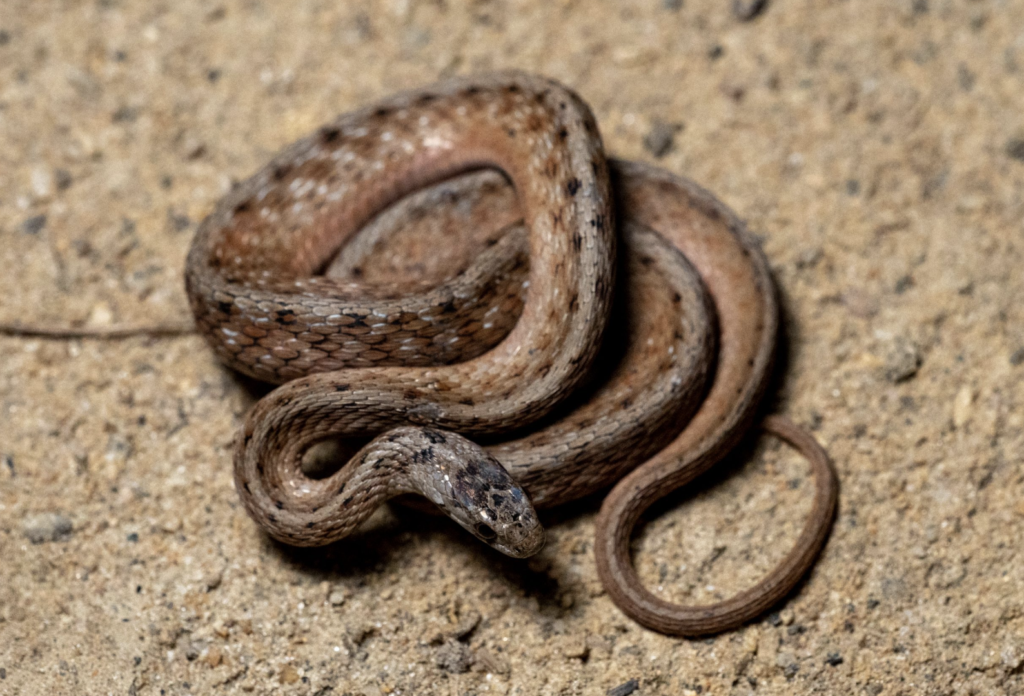
The brown dekay snake is a small, harmless snake that can be found in wooded areas and near homes. They are identified by their brown or gray body with a darker stripe down the center of their back. Brown dekays are known to eat insects, spiders, and small invertebrates.
Black Rat Snake
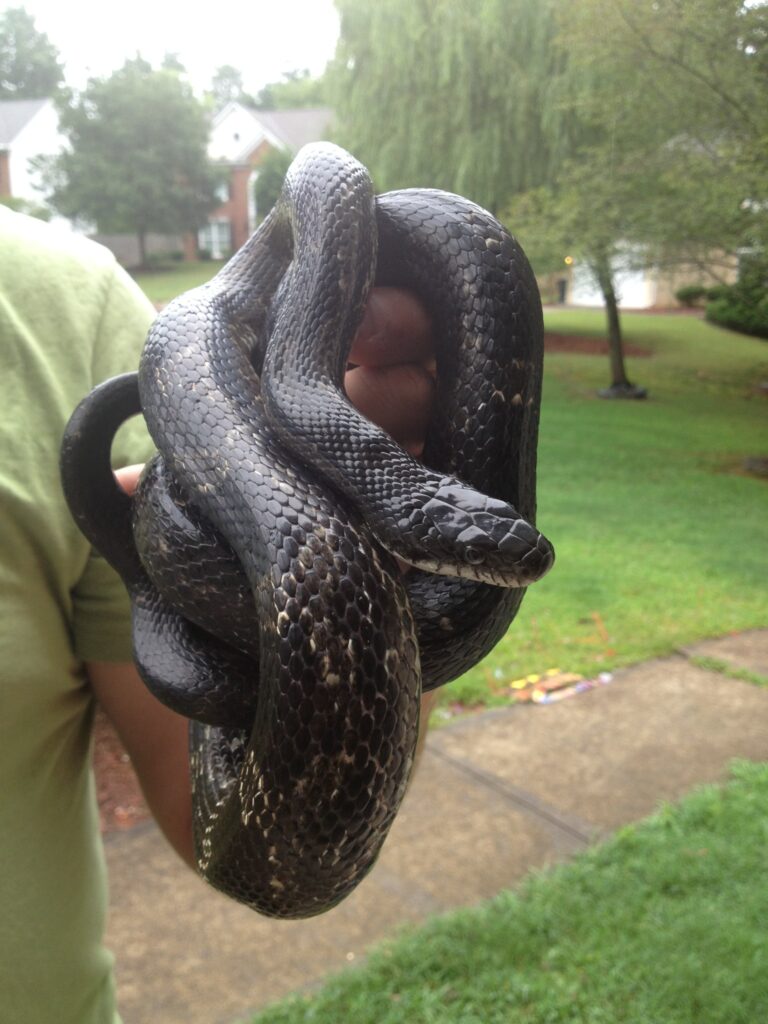
The black rat snake is a non-venomous snake that can grow up to six feet long. They are identified by their black body with white or yellow markings on their belly. These snakes are great climbers and can be found in trees, attics, and on rooftops. They are known to eat small mammals and birds.
Eastern King Snake
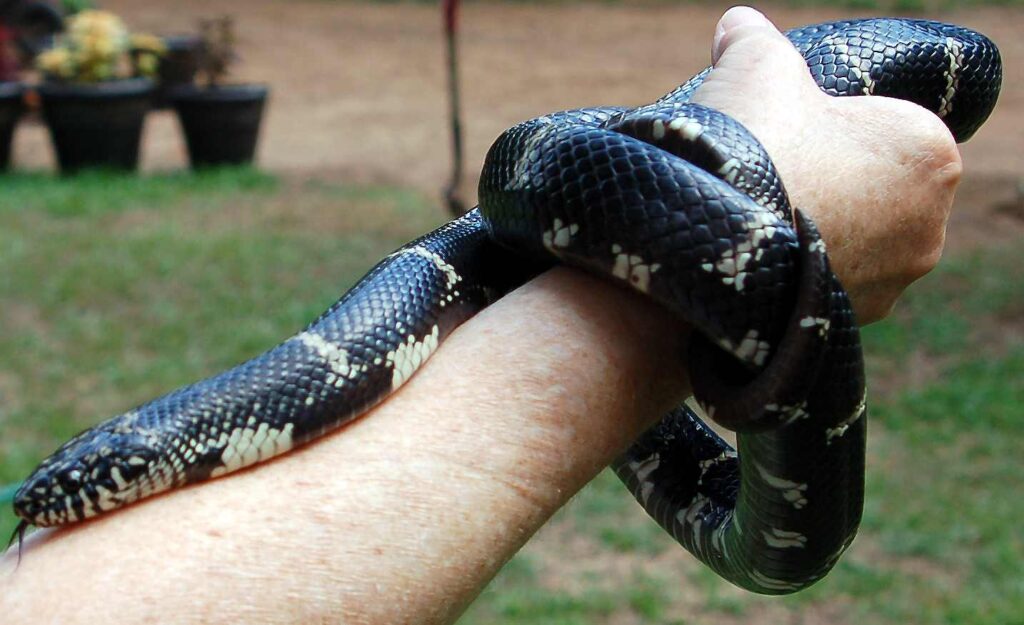
The Eastern King Snake is a non-venomous snake that can be found in wooded areas and near homes. They are identified by their black body with white or yellow markings. King snakes are known to eat other snakes, including venomous snakes such as the copperhead, hence, why we have a waiting list of people that want us to release them in their yard.
What Attracts Snakes to Your Yard?
Snakes are attracted to yards that provide shelter, food, and water. Homeowners can reduce the risk of snakes in their yard by removing debris, such as wood piles and leaf litter, and sealing up any holes or gaps in their home’s foundation. It is also important to keep bushes and shrubs trimmed, as well as keeping grass and other vegetation short.
Habitat Modifications to Deter Snakes:
Homeowners can also make modifications to their yard to deter snakes. Thin mulch is recommended over thick mulch, as thick mulch can provide a hiding place for snakes. Shrubs and bushes should not touch the ground, as this can provide a sense of security for snakes to hang out and ambush prey. It is also important to fill in any holes made by rodents or erosion, as these can be used as dens by snakes. Finally, removing any wood piles or debris from the yard can eliminate prime shelter for snakes.
Snake Repellent:
At Southern Wildlife Management, we use snake repellent to deter snakes from entering your yard. We do not use the type of repellent that contains naphthalene due to safety concerns. Snake repellent works by disrupting the snake’s sensory organ, causing them to feel uncomfortable and move on to another area. It is important to note that repellent alone is not enough to keep snakes away. Proper placement and combination with other habitat modifications are crucial to effective snake control.
Snake Bites
We like to do our part to make the wildlife to human interactions more favorable and less traumatic so a part of our natural response is to dispel myth or social media drama….
According to the Centers for Disease Control and Prevention (CDC), an average of about 7,000 to 8,000 people in the United States are bitten by venomous snakes each year, and of those, approximately 5 to 6 deaths occur. However, the CDC does not differentiate between provoked and unprovoked snake bites in their reporting.
In general, most snake bites occur when people accidentally step on or otherwise disturb a snake, rather than when the snake is provoked. However, some snake bites may be considered provoked if the person was intentionally handling or harassing the snake.
It’s important to note that while venomous snake bites can be dangerous, they are relatively rare in the United States, and the majority of snake bites are from non-venomous snakes. Did you get that “Majority of the snake bites are from Non-Venomous Snakes”. We take pictures of snakes that we remove from yards all the time for our social media sites. I promise you, the harmless water snakes strike me 15 times during a brief 10 minute encounter versus a copperhead’s zero effort. Copperheads, in our experience, are docile and just want to be left alone. They know they are bad asses so they do not feel the need to prove themselves. Watersnakes are to snakes what Yellowjackets are to bees and wasps.
FAQ’s
Q: What should I do if I find a snake in my yard?
A: If you find a snake in your yard, it is best to leave it alone and call a professional wildlife control company like Southern Wildlife Management to safely and humanely remove it.
Q: How can I tell if a snake in my yard is venomous?
A: The easiest way to tell if a snake in your yard is venomous is by looking at its eyes. Venomous snakes have slit-like pupils, while non-venomous snakes have round pupils. However, it is always best to err on the side of caution and assume that all snakes are potentially dangerous.
Q: Can I use mothballs to repel snakes?
A: Yes you can use mothballs. They are made of Naphthalene which is also the active ingredient in many snake repellents. However, it is a cancer causing compound according the the CDC. Therefore even though you “can” use mothballs, you shouldn’t.
Q: How do I prevent snakes from entering my yard?
A: This feels like a trick question. There is no way to prevent them from entering. You can cutback on snakes entering your yard by making habitat modifications, such as thinning out thick mulch, trimming bushes, filling in holes, and removing wood piles and debris. You can also use snake repellents.
Q: What should I do if I am bitten by a snake?
A: If you are bitten by a snake, seek immediate medical attention – CALL 911. Do not try to suck out the venom or apply a tourniquet, as this can make the situation worse.
Q: How do I safely dispose of a dead snake?
A: One of two ways to safely dispose of a dead snake, wear gloves and use a shovel to place the snake in a plastic bag. Tie the bag securely and dispose of it in a garbage can with a tight-fitting lid. Or dig a hole deep enough that a dog wouldn’t dig it up and bury it in your yard.
Q: How can I tell the difference between a venomous and non-venomous snake?
A: In addition to looking at the shape of their pupils, you can also tell the difference between venomous and non-venomous snakes by looking at their heads. Venomous snakes have triangular-shaped heads, while non-venomous snakes have more rounded heads. Better than trying to identify the snake treat all snakes as if they are venomous and respect them. Give them distance and let them move on.
Q: What is the most common type of venomous snake found in Georgia?
A: The most common type of venomous snake found in Georgia is the copperhead.
Q: How can I keep snakes out of my house?
A: To keep snakes out of your house, seal any cracks or gaps around doors and windows, and make sure your screens are in good repair. You can also use door sweeps and weather stripping to keep snakes from entering through the gaps under your doors.
Q: Do all snakes in Georgia lay eggs?
A: No, not all snakes in Georgia lay eggs. Some species, such as the copperhead and cottonmouth, give birth to live young.
Q: How do I keep snakes away from my bird feeder?
A: To keep snakes away from your bird feeder, place it on a pole with a baffle, at least 4 feet off the ground. This will prevent snakes from climbing up to the feeder.
Q: Do snakes hibernate in Georgia?
A: Yes, snakes in Georgia do hibernate during the winter months.
Q: Can snakes climb trees?
A: Yes, many species of snakes, including the black rat snake and black racer, are excellent climbers.
Q: Are snakes dangerous to pets?
A: Yes, some species of snakes can be dangerous to pets. It is best to keep your pets indoors or supervise them closely when they are outside.
